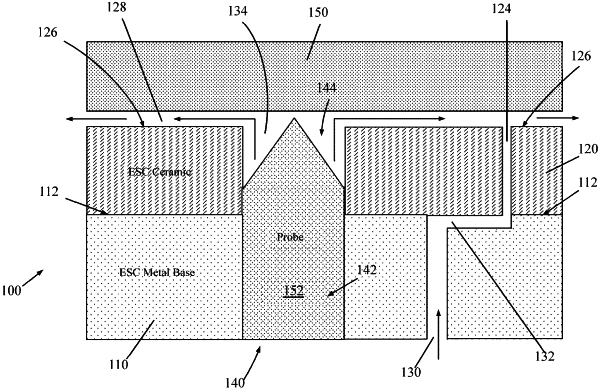| CPC H01L 21/6833 (2013.01) [H01L 21/67017 (2013.01); H01L 21/67109 (2013.01); H01L 21/67248 (2013.01)] | 19 Claims |

|
10. A method of processing a workpiece, the method comprising:
supporting a workpiece on an electrostatic chuck assembly comprising:
a base layer that includes:
an upper base layer surface and a lower base layer surface,
a base layer device opening that extends through the base layer and is adapted to contain a portion of a device that performs an operation of the electrostatic chuck assembly,
a gas flow conduit extending horizontally over an area of the base, the gas flow conduit comprising a conduit segment that connects with the base layer device opening,
a gas flow inlet passing into the base and connected to the gas flow conduit; and
a ceramic layer disposed above the base layer, the ceramic layer comprising:
an upper ceramic layer surface,
a lower ceramic layer surface, and
multiple gas flow vents extending between the lower ceramic layer surface and the upper ceramic layer surface, the vents being in fluid communication with the gas flow conduit, and
a ceramic layer device opening extending through the ceramic layer, connected to the base layer device opening, and adapted to contain a portion of the device,
wherein the workpiece is supported on the upper ceramic layer surface; and
causing gas to flow into the gas flow inlet and through the gas flow conduit, and
further comprising maintaining a temperature of the workpiece in a range from −30 to 100 degrees Celsius.
|